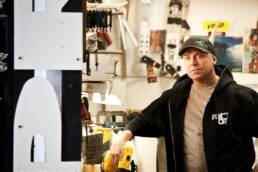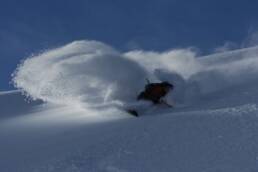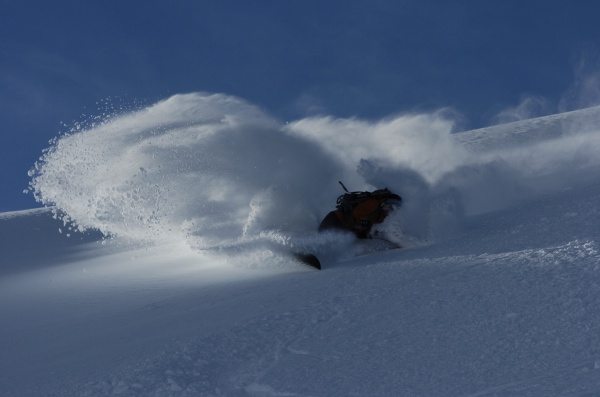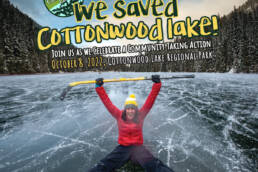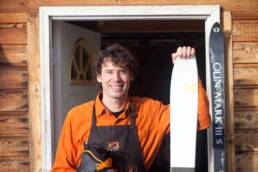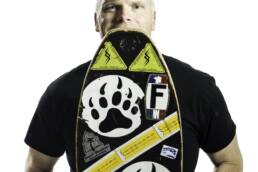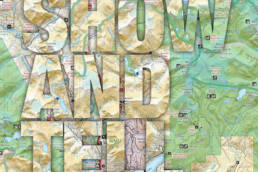The world of mountain culture has lost a pioneer entrepreneur. Whistler’s Chris Prior, founder of Prior Ski and Snowboard Manufacturing, passed away suddenly on Sunday, October 15. Prior, which started out manufacturing snowboards for freeriding, racing and split-board touring before moving into the ski market as well, had celebrated 25 years in business as of last season. The company’s first big-name client was Canadian Olympic champ and Kootenay resident Mark Fawcett. Chris Prior’s craftsmanship and success inspired boutique ski and board manufacturers all over North America. In its 10th anniversary issue, Kootenay Mountain Culture assigned Cranbrook-based writer Matt Gibson to chronicle some of the up-and-coming ski and board brands across the west including Prior. Here’s a look back at some of the stories he shared.
In 1868, Sondre Norheim competed in ski jumping at Norway’s first national competition. The audience was surprised and impressed by his talent, and one newspaper wrote, “He had such a remarkable style of skiing that one would think he had been born to it.” Most historians agree this event was a tipping point. It turned skiing into a widely practiced sport and created an enthusiasm in Norway for skiing that would eventually carry into America and the rest of the world.
The secret to Norheim’s success was his skis. They were the first incarnation of modern-day telemark skis, about 240cm long, shorter than most at the time, which enabled him to turn more quickly. They were 70mm wide at the waist and the first in history to have a sidecut to help him carve. Each ski was tooled from a solid piece of wood, weighed more than five pounds and had simple toeand heel-strap bindings, both made from twisted birch-root willow. They represented the greatest technological innovation in skiing’s 7,000-year history
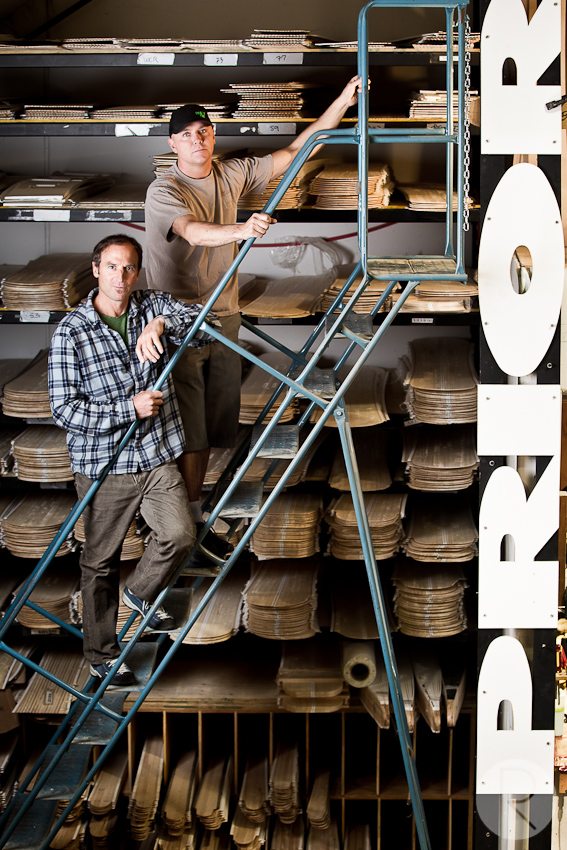
Whether bombing down a rocky pitch on a titanium diamond frame, skimming across a monster wave on a five-foot fibreglass board, or floating through three feet of powder on a pair of carbon-fibre planks, terrain-based sports all have one thing in common – they require specialized, technically specific gear. A bike, ski or board mediates an athlete’s relationship with the surface they cruise, carve or shred; as Norheim and his equipment proved, a couple of choice tweaks can make all the difference.
The popularity of mountain-riding sports has grown significantly over the past two decades, with more people riding more different kinds of terrain. To accommodate this, equipment has become increasingly specialized. In 1990, Salomon sold one model of ski. Today, they offer 34 models customized for five riding styles. Still, for the most hardcore skiers, that’s not enough. Some people care so deeply for the ride that they want one-of-a-kind gear tailored specifically to suit their taste. To them, the interaction between man and mountain is sacred and personal, and so too must be their equipment.
A small and unique industry has emerged to meet the needs of these mountain-riding purists: boutique manufacturing. The CEOs are passionate riders who have devoted their lives to designing and building equipment of the highest calibre. Unrivalled access to knowledge and technology has enabled motivated sports lovers around the world to open their own small factories to make specialized gear, whether it be mountain biking, kite surfing or skateboarding. Here in the Pacific Northwest, several notable boutique manufacturers have taken root here in our own backyard: Prior in Whistler, Crown in Vancouver, DeCosse Customs in Cranbrook, Big Bend Skis, and Trapper Snowboards in Revelstoke, and Ullr in McCall, Idaho, to name a few.
There’s a twist to designing and building specialized gear. No two riders share the exact same physical build, style or preference for terrain. No ski or board, no matter how well designed, can provide the optimal ride for everyone. To address this problem, boutique manufacturers take on the monster task of building individually customized rides. After you tell them where you like to ride, how good you are, your height and your weight, they will design a ski that complements your riding style, ability and preferred terrain based on those parameters. Custom gear owners will tell you the difference is striking. Rider Henry Ogden feels DPS, his custom ski maker in Salt Lake City, Utah, has “invented a new way of being in the snow.”
These are businesses owners who have dedicated their lives to crafting the most comfortable and responsive powdersticks that will ever grace a mountain glade. But in their pursuit of the perfect ski or board, these artisans face several problems: manufacturing requires extremely expensive machines, a broad set of skills, an inordinate amount of labour, and, in the end, offers little financial reward. It’s their desire to inch ever closer to that perfect, blissful ride that motivates these purists to test, refine and press new gear year in and year out.
Nobody believes in the importance of equipment more than engineer Sheldon DeCosse. As the owner of Cranbrook’s Decosse Customs, he once designed “impact protection” parts for airplanes that were used for difficult take off and landing conditions. That is to say, when the United Nations was looking for planes to fly into Africa’s unstable, war-torn Ivory Coast last spring, the supplier asked DeCosse to help build the aircrafts.
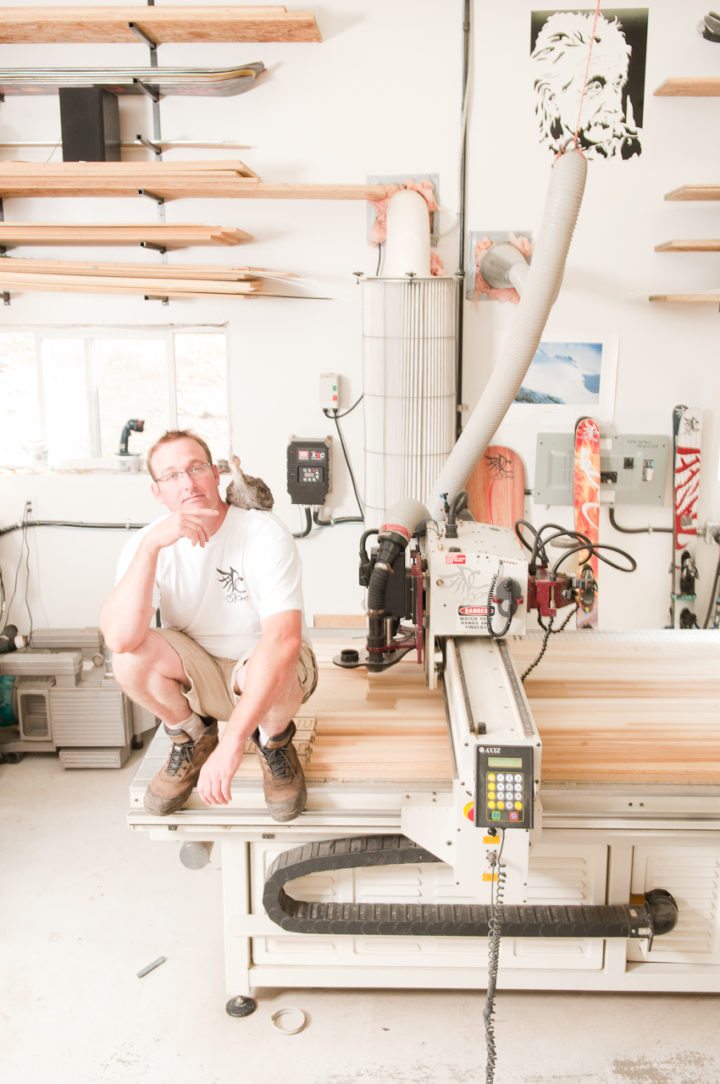
If you were to put an airplane engineer’s income tax return beside one that belongs to a boutique ski manufacturer, you would notice the airplane engineer’s annual income is heftier. Despite the significant difference in pay, DeCosse only designs airplane parts a few months of the year and spends the rest of
his time running his boutique sporting goods manufacturing company. DeCrosse designs and presses his own line of skis, snowboards, kitesurfing boards, kite skis, kite snowboards and akes individually customized gear. He and his wife, Renée, run the company out of their home, which sits on a hill overlooking Cranbrook. The workshop occupies about 1,500 square feet of the building and the couple lives in the remaining 500 square feet.
DeCosse has sacrificed more than just living space for his dream job. In the course of running his business, he has invested over $500,000 in equipment and stock and spent countless unpaid hours building his company when he could have been designing airplane parts. As a result, DeCosse’s retirement fund would be bigger if he hadn’t started his own company. Drinking a cup of coffee at his wooden kitchen counter, which doubles as the dining-room table, he simply says, “It’s a passion. When
I’m out with friends…and they’re riding and I hear those ‘Woo Hoos!’ and hoots and hollers, that’s my paycheque.”
Ask any boutique manufacturer why they make gear and you will get a similar answer. Daryl Ross, owner of Big Bend Skis, a new startup in Revelstoke, says, “I grew up skiing. I’ve always loved skiing. I do it because I love it.” Matt Neuman of Ullr Skis in McCall, Idaho, says he loves “seeing [the clients’] excitement after they first ski on their new skis.”
Boutique builders have to love their jobs. If they didn’t, they would give up very quickly. If you haven’t already figured it out, making bespoke gear is an impossibly difficult way to make a living; most manufacturers have to supplement their income with other work.
It’s their desire to inch ever closer to that perfect, blissful ride that motivates these purists to test, refine and press new gear year in and year out
THE FIRST CHALLENGE is that the manufacturing equipment is hard to buy. “Do you go to the hardware store and say ‘I want an 18,000-psi-capable ski press?’ You can’t,” says DeCosse. “I build all my own equipment.” Once the press is in place, the owner must learn to make a good pair of skis or a board through trial and error. It can be a frustrating and expensive process. DeCosse does not speak kindly of his early attempts. “We started out with something that looked like a total turd,” he says. Turds go in the garbage and the material costs are written off as ski-making lessons.
Designing and tooling a ski from scratch that is better and more unique than mainstream skis is a lengthy process. First the ski must be designed digitally using a sophisticated 3-D design program such as AutoCAD. A prototype is built and tested, problems are identified, the design is tweaked, and then a new
prototype is built and tested. After 10 years of practice, DeCosse estimates the process to make one prototype pair takes him about 300 hours and costs in the neighbourhood of $7,000.
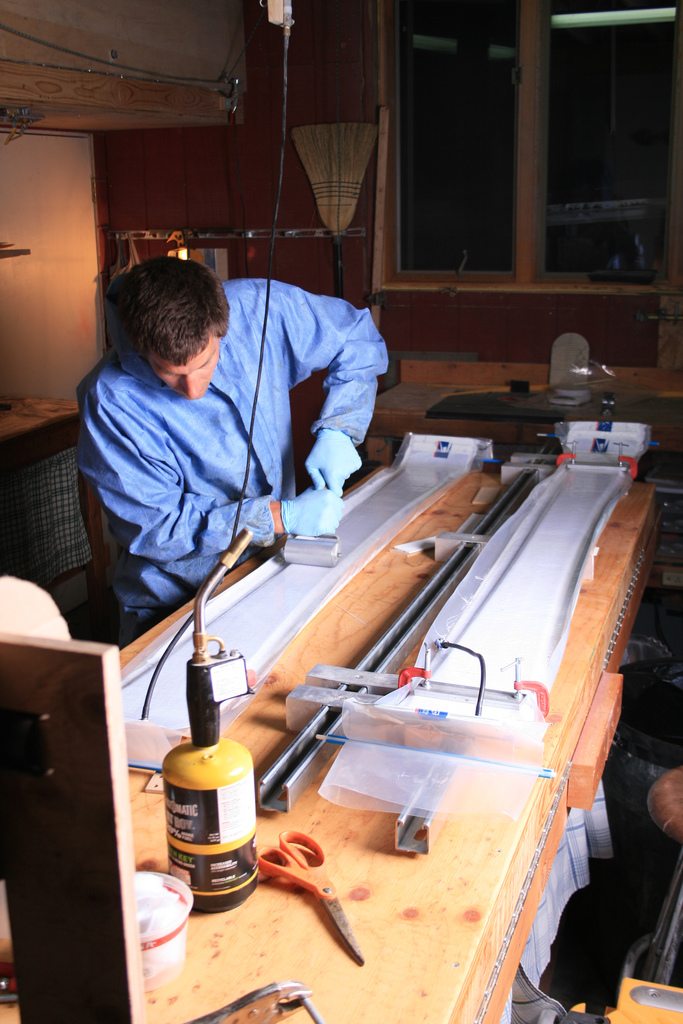
Selling the skis is an additional challenge because the market for custom skis is incredibly small. Bob Orbacz is the director of finance and operations for SnowSports Industries America, a business that represents ski and snowboard companies in North America, and he is also the former president of US operations for Elan Skis. He estimates five mega-manufacturers – K2, Volkl, Rossignol, Salomon, and Atomic – sell approximately 75 per cent of the skis in the United States, and about seven smaller manufacturers sell around 20 per cent, leaving approximately five per cent for boutique manufacturers. At the time of writing, the website ExoticSkis.com listed 96 small-scale ski manufacturers (including the boutique segment) in Canada and the United States. If that portion of the market were divided equally among them, each would get about 0.05 per cent of the market.
This problem is compounded because only the biggest boutique manufacturers can sell at retail stores. Generally, retail buys inexpensive skis that are mass-produced in places like China and Slovenia, where labour and materials are cheap, and made by brands that advertise in magazines and on television. To pay $800 or more for a pair of skis that nobody has heard of, no matter how good they are, puts retailers off, so boutique manufacturers are forced to direct market their products through social media, websites and word of mouth. The most successful boutique companies sponsor pro rider teams.
One strategy that seems to set the successful boutique builders apart is finding a niche, a very specialized product with a market too small to interest big companies right away, giving them an opportunity to establish themselves as a top supplier of that product early on. For Prior, it’s splitboards. For DeCosse Customs, it’s kite skis and snowboards. These were actually the first products each company made.
“When I’m out wiht friends…and they’re riding and I hear those ‘Whoo Hoos!’ and hoots and hollers, that’s my paycheque.” – Sheldon Decosse
ASK ANY BOUTIQUE SKI PRESSER, custom mountain-bike manufacturer, or surfboard shaper what’s wrong with off-the-rack products, and they will almost always describe an industry where a few men in white lab coats dictate what kind of equipment the world rides. To them, it is a grave injustice.
The truth is, however, off-the-rack equipment is fine for most people, because it is designed for the average rider. It’s the most hardcore riders, those who have made it a lifestyle, that really appreciate custom equipment. Pro skier Eric Hjorleifson, who helped design the Renegade for 4FRNT, understands the varying markets.
“The average ski off the rack is designed for the average skier. An intermediate skier…is looking for a ski that aids their limited skill set. A soft flexing ski with a tight turn radius is the easiest combination for most people to manage,” he explains. “However, this design overcompensates for lack of skiing technique and is actually quite detrimental to skiers who are looking for higher performance tools to ski more aggressively and at higher speeds.”
Think of it like wine. Most people will look at a rack of wine, grab a bottle that has a nice label and an appropriate price tag, take it home, drink it, and forget it. Only connoisseurs will pay hundreds of dollars for a bottle to sniff it, to savour it, and to tell their friends about it the next day. Most people just want a ride with nice graphics and a reasonable price tag. Custom rides are for the connoisseurs.
That’s not to say custom gear can’t make a difference for any rider. Personalized design offers performance that cookie-cutter designs simply cannot, and the benefits aren’t restricted to pros that huck themselves off cliffs 100 days a year. After investing a decade of his life and vast sums of money into this difficult industry, Sheldon Decosse has one statement that could explain why he continues. “I’m skiing better at 38 than I was at 18,” he says smugly. “Not because I’m fitter, but because it’s easier.”
Matt Gibson is a Cranbrook-born writer, photographer, surfer and snowboarder. He’s only ridden mass-produced boards in the past but plans to remedy that.
Related Stories
“We Saved Cottonwood Lake” Celebration
The Cottonwood Lake Preservation Society is holding an event October 8, 2022 to celebrate saving the regional park from…
Adventurer Sir Chris Bonington Headlines 2017 Banff Mountain Festival
The Banff Mountain Film and Book Festival has announced Sir Chris Bonington, mountaineer extraordinaire, is the…
From Skis to Headlamps: Meet the Craft Gear Makers of the Kootenays
Canada’s first craft outdoor gear alliance is rolling out a #ShopLocalBC campaign in which Kootenay makers step into…
Chairmen of the Board – Meet the Family Who Brought Snowboarding to Canada
From Calgary to the Coast Range, the Achenbach family has helped guide snowboarding’s rise across Canada and the world.…
Origin Story: Meet The Makers Of The Backroad Mapbooks
They were born on a printing press in a Surrey, British Columbia, garage and tirelessly hawked at trade shows to…


